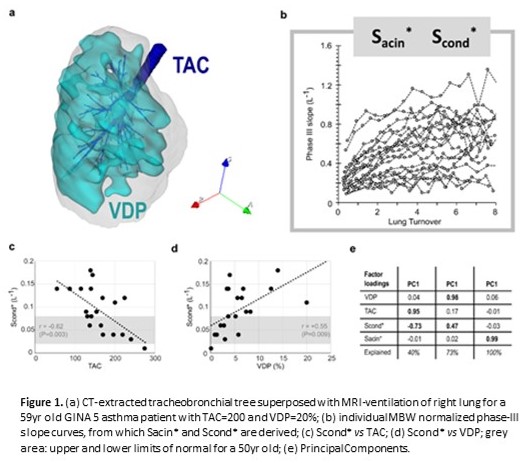Abstract
INTRODUCTION: If Multiple Breath Washout (MBW) derived acinar ventilation heterogeneity (Sacin) really represents peripheral units, the N2 phase-III slope of the first MBW exhalation should be curvilinear, due to the ability of gas diffusion to continuously equilibrate N2 concentrations between neighbouring lung units, and thus reduce the slope as exhalation continues. We investigated this in smokers with CT-proven functional small airway disease.
METHODS: Instantaneous N2 slopes were computed over 40ms intervals throughout phase-III and normalized by mean phase-III N2 concentration. N2 phase-III curvilinearity was the rate at which the instantaneous N2-slope decreases past the phase-II peak over a 1s interval; for a linear phase-III slope unaffected by diffusion, this rate would amount to 0 L-1/s.

RESULTS: In forty-six smokers (66(+8)years;49(+26)packyears) with CT-evidence of peripheral lung destruction, instantaneous N2-slope decrease was compared between those with (fSAD+fEmphys)>20% (-0.26 +0.14(SD)L-1/s; n=24) and those with (fSAD+fEmphys)<20% (-0.16+0.12(SD)L-1/s; n=22) (P=0.014); experimental values fell in the range predicted by a realistic for progressive reduction of terminal bronchioles (-0.09 to -0.56 L-1/s).
DISCUSSION : In smokers with CT-based evidence of functional small airways alterations, it is possible to demonstrate that Sacin really does represent the most peripheral airspaces.